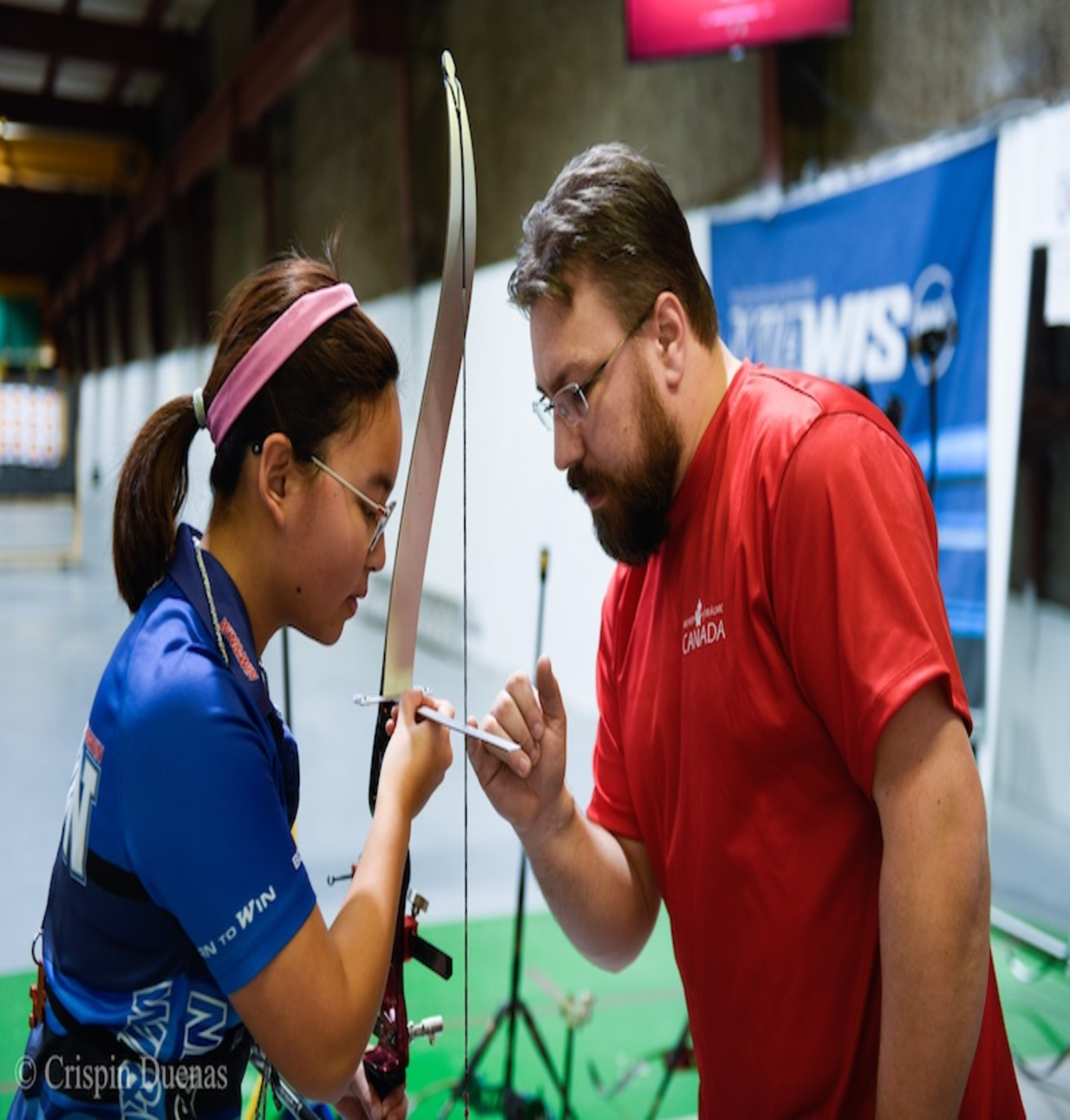Archer and Coach Communication at the 2020 Tokyo Olympics
DOI:
https://doi.org/10.31949/ijsm.v3i1.4879Abstract
In competition, communication between athletes and coaches is essential to the individual athlete's success in achieving peak performance. Communication is important and cannot be abandoned during matches and practice. The evolution of sports, including archery, has made communication in sports a crucial component. In archery matches, communication is increasingly intense in individual events. The research examined the communication between archers and archery coaches in South Korea during the 2020 Tokyo Olympics. Because South Korean Archery is one of the best Archery teams in the world. In addition, the South Korean Archery dominated almost all numbers that were contested and brought South Korea to the top of the standings. Semiotics (Peirce) was used to analyse archery match finals of individual numbers in which South Korean archer participated. The results of this research revealed that communication between the archer and their coach was dominated by non-verbal communication in individual numbers symbolised by the high five.
Keywords:
non-verbal communication, symbolism, semiotics, athlete communication, coach communicationDownloads
References
Al-Yamani, Z. (2021). Sejarah Panjang Dominasi Korsel di Panahan Olimpiade. https://www.viva.co.id/sport/gelanggang/1390231-sejarah-panjang-dominasi-korsel-di-panahan-olimpiade
Azizah, N. (2021). Korea Selatan Dominasi Emas Panahan Olimpiade Tokyo. https://www.republika.co.id/berita/qwsz9m463/korea-selatan-dominasi-emas-panahan-olimpiade-tokyo
Creswell, J., & Poth, C. (2017). Qualitative inquiry and research design: Choosing among five approaches. Sage publications.
Faisal, F., Zulham, Z., Syukur, A., & Safitri, D. (2018). Hubungan Komunikasi dengan Prestasi Atlet. Communicatus: Jurnal Ilmu Komunikasi, 2(1), 97–108. https://doi.org/10.15575/cjik.v2i1.1625
Hardy, M., & Susilo, D. (2022). Jakarta’s urban culture representation on social media@ jakarta_tourism: A semiotics analysis. Simulacra, 5(1), 29–43. https://doi.org/10.21107/sml.v5i1.13648
Hitti, P. (2002). History of The Arabs: From the Earliest Times to the Present. New York, NY: Palgrave Macmillan.
Indahwati, N., & Ristanto, K. (2016). The application of pettlep imagery exercise to competitive anxiety and concentration in Surabaya archery athletes. International Journal of Educational Science and Research (IJESR), 6(3).
Jawapos.com. (2021). Korea Selatan Menggila di Cabang Panahan Olimpiade Tokyo 2020. https://www.jawapos.com/sports/26/07/2021/korea-selatan-menggila-di-cabang-panahan-olimpiade-tokyo-2020/
Kamelia, K. (2019). Using Video as Media of Teaching in English Language Classroom: Expressing Congratulation and Hopes. Utamax: Journal of Ultimate Research and Trends in Education, 1(1), 34–38. https://doi.org/10.31849/utamax.v1i1.2742
Kim, Y., Chang, T., & Park, I. (2019). Visual scanning behavior and attention strategies for shooting among expert versus collegiate Korean archers. Perceptual and Motor Skills, 126(3), 530–545. https://doi.org/10.1177/0031512519829624
Kim, Y., & Park, I. (2020). “Coach Really Knew What I Needed and Understood Me Well as a Person”: Effective Communication Acts in Coach–Athlete Interactions among Korean Olympic Archers. International Journal of Environmental Research and Public Health, 17(9), 3101. https://doi.org/10.3390/ijerph17093101
Maxson, L. (2013). The archery: The history of archery series. Worcestershire: Read Books Ltd.
Meyer, C., & Wedelstaedt, U. (2022). Semiotic and asemiotic practices in boxing. Semiotica, 2022(248), 251–278. https://doi.org/10.1515/sem-2022-0075
Meyer, O., Omdahl, M., & Makransky, G. (2019). Investigating the effect of pre-training when learning through immersive virtual reality and video: A media and methods experiment. Computers & Education, 140(October), 103603. https://doi.org/10.1016/j.compedu.2019.103603
Nauright, J. (2012). Sports around the World: History, Culture, and Practice [4 volumes]: History, Culture, and Practice. Abc-Clio.
Oktafiranda, N., & Ilham, M. (2020). Komunikasi Antarpribadi Pelatih Dan Atlet Panahan PELATDA DKI Jakarta. JURNAL SEGAR, 9(1), 54–62. https://doi.org/10.21009/segar/0901.06
Olympics.com. (2020). Archery overview. https://olympics.com/tokyo-2020/en/sports/archery/
Olympics.com. (2021). Women’s Individual Champion. https://olympics.com/en/video/women-s-individual-qfs-sfs-finals-archery-tokyo-2020-replays
Olympics.com. (2022). Halaman Profil Olympics. https://olympics.com/
Peirce, C. (1977). Semiotics and significs, ed. Charles Hardwick. Bloomington IN: Indiana University Press.
Putranto, T. (2021). Instagram Panahan Korea Selatan Pada Olimpiade Tokyo 2020 Dalam Perspektif Determinisme Teknologi. Scriptura, 11(2), 65–73. https://doi.org/https://doi.org/10.9744/scriptura.11.2.65-73
Putranto, T. (2022). Komunikasi Kelompok Recurve Beregu Putri Jawa Timur Pada Pekan Olahraga Nasional XX. Jurnal Pustaka Komunikasi, 5(2), 344–357. https://doi.org/10.32509/pustakom.v5i2.2198
Reftari, D., Suryana, A., & Setiaman, A. (2018). Komunikasi Pemasaran Olahraga Renang. Jurnal Kajian Komunikasi, 6(2), 247–260. https://doi.org/https://doi.org/10.24198/jkk.v6i2.13221
Sepadya, P., Rachmah, N., & Ali, M. (2020). Internalisasi Nilai-Nilai Pendidikan Karakter Dalam Olahraga Panahan. Universitas Muhammadiyah Surakarta.
Sobur, A. (2001). Analisis teks media: Suatu pengantar untuk analisis wacana, analisis semiotik dan analisis framing. Bandung: Remaja Rosdakarya.
Worldarchery. (2021). Tokyo 2020 Olympic Games. https://worldarchery.sport/competition/14904/tokyo-2020-olympic-games?photos_tag=17 JULY VENUE
Yonhap. (2021). [Tokyo Olympics] Why is S. Korea so good at archery? Athletes find answer in transparency, internal competition. http://www.koreaherald.com/view.php?ud=20210726000558
Zaimar, O. (2014). Semiotika dalam analisis karya sastra. PT Komodo Books.

Published
How to Cite
Issue
Section
License
Copyright (c) 2023 Teguh Dwi Putranto

This work is licensed under a Creative Commons Attribution-ShareAlike 4.0 International License.

_.png)
_(2).png)
.png)
.png)
.png)
